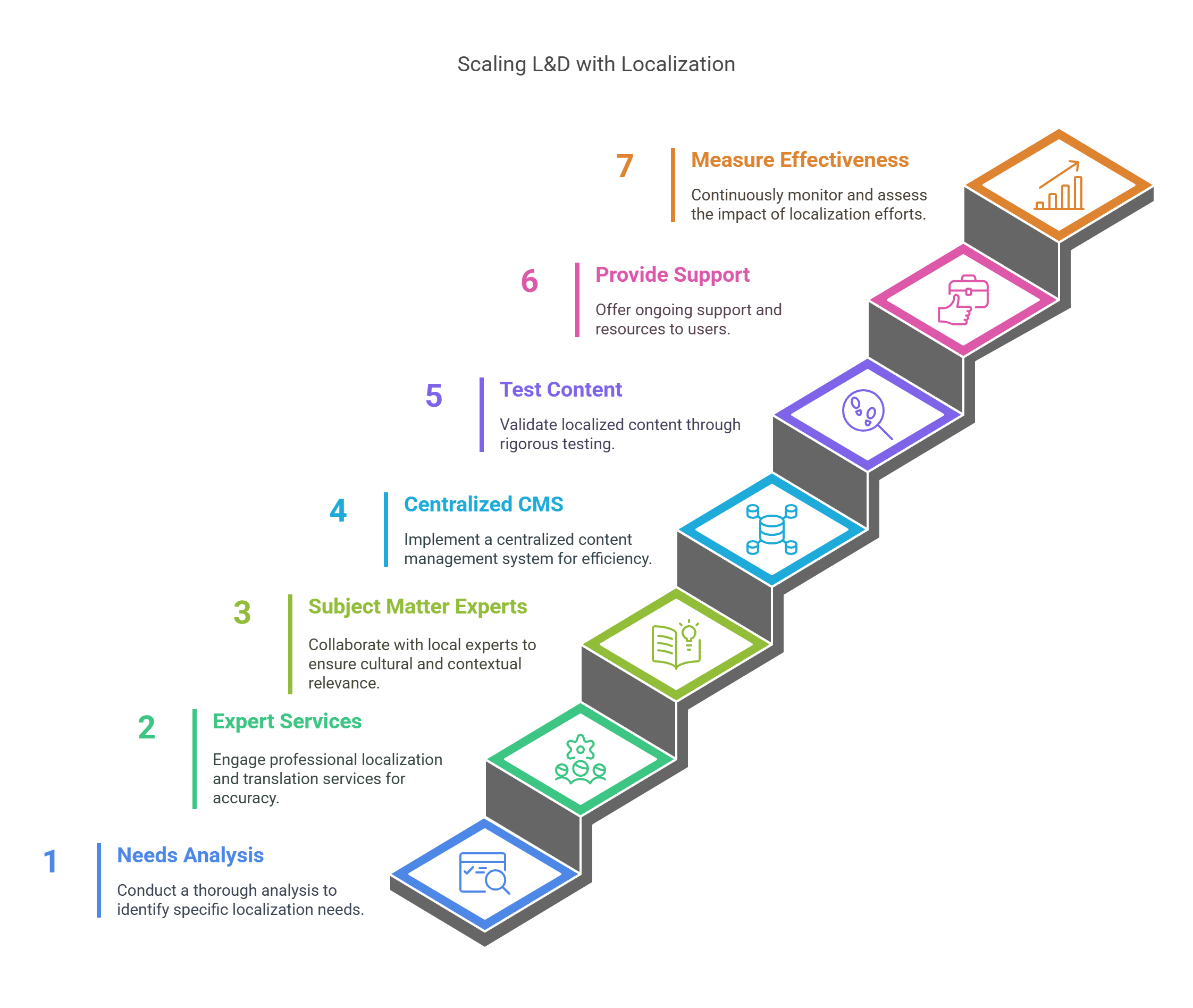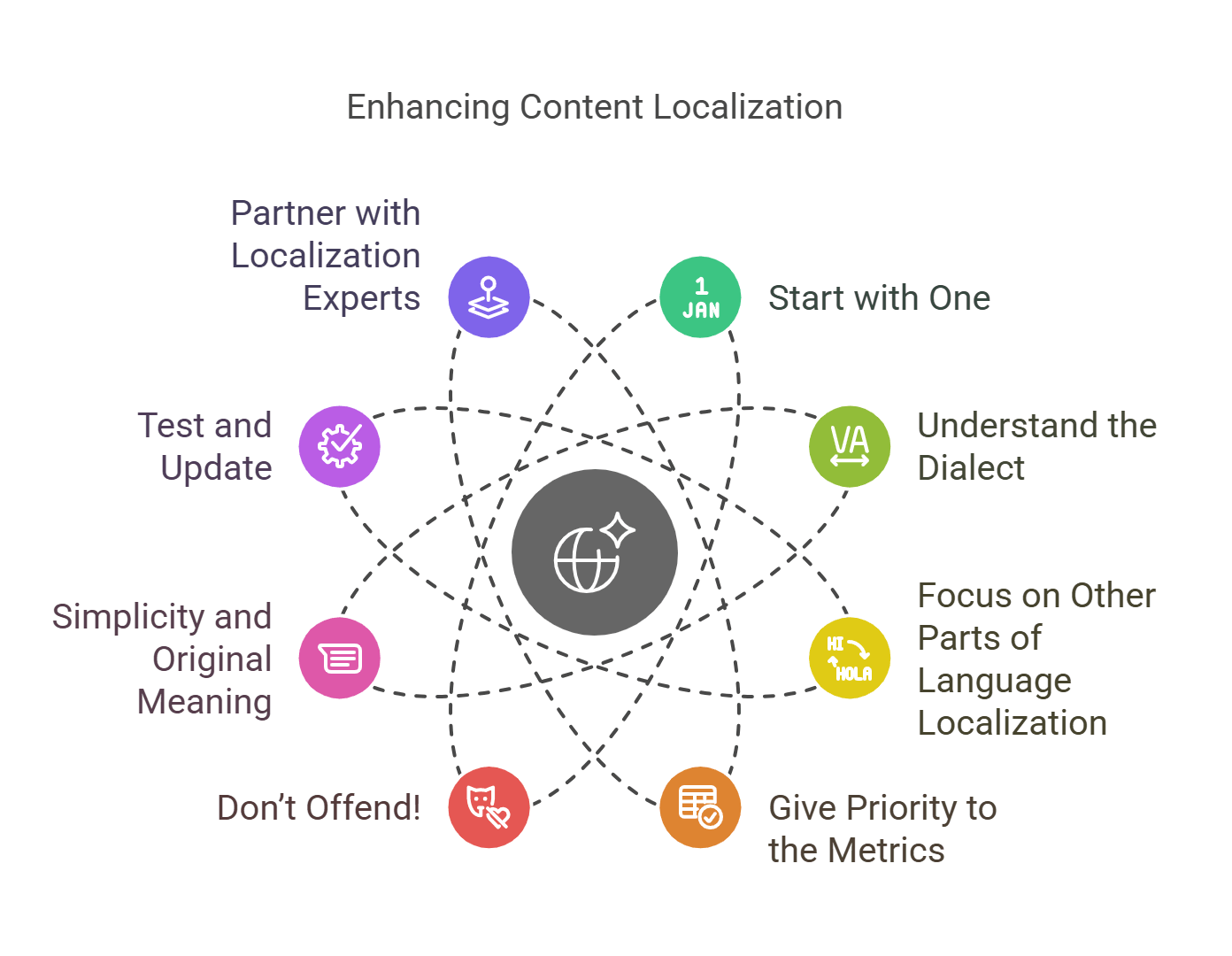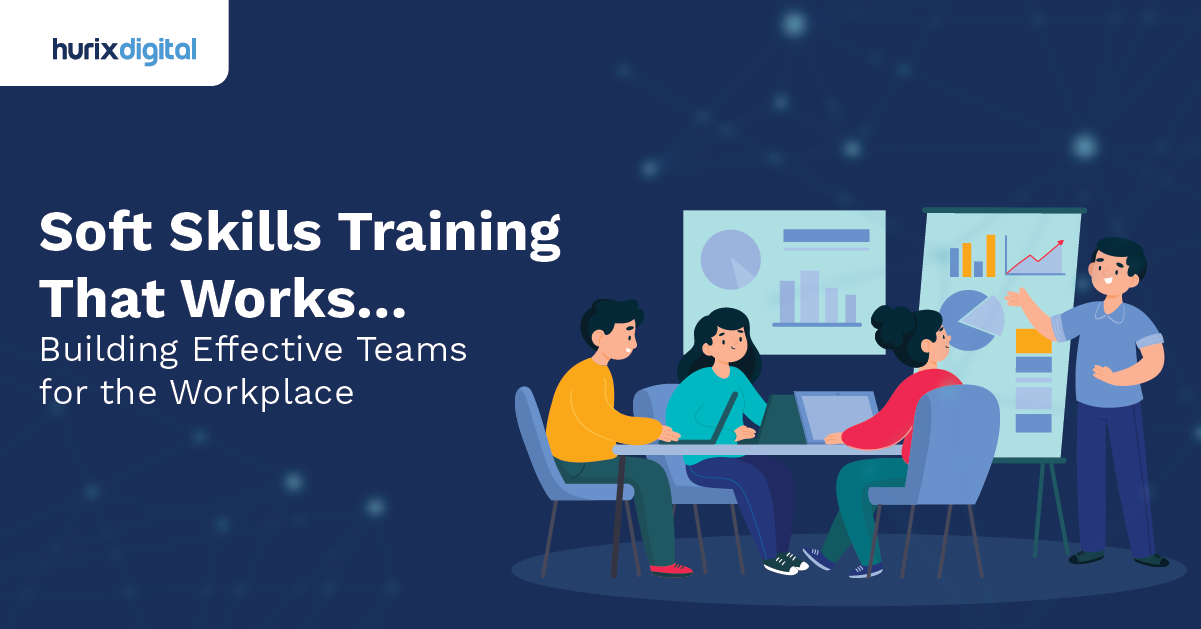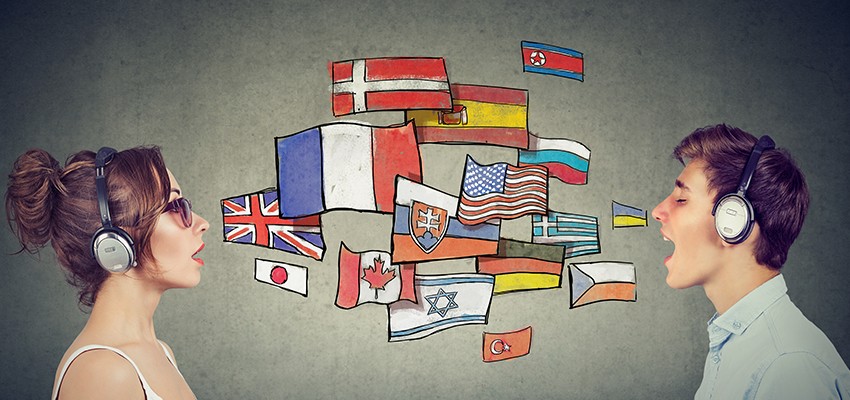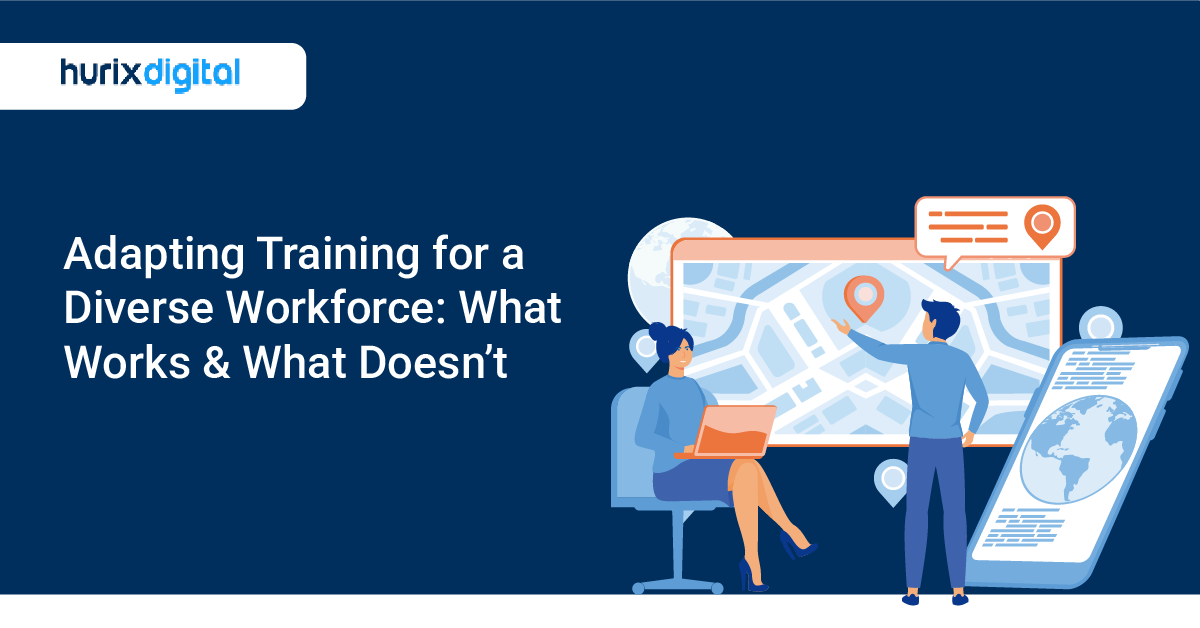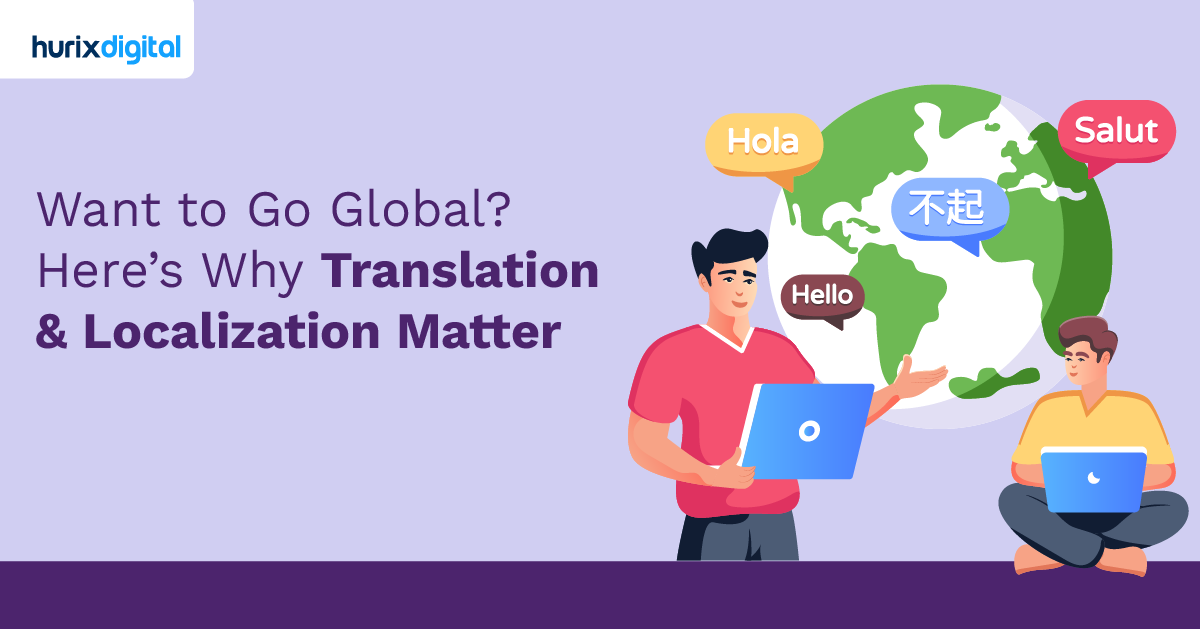
Want to Go Global? Here’s Why Translation & Localization Matter!
Summarize with:
During the early days of the COVID-19 pandemic, many speculated that globalization was ending, with trade, capital, and people flows dropping sharply — prompting businesses to rethink strategies and seek the best localization services to stay connected with diverse markets.
Globalization, however, has not only rebounded but is prospering, according to NYU Stern’s Center for the Future of Management’s DHL Global Connectedness Index. International travel increased in 2022 as trade, finance, and information movements worldwide surpassed pre-pandemic levels.
Chief Learning Officers guarantee that learning and development initiatives can scale successfully across geographies as they grow internationally.
The difficulty is keeping training at a constant quality level while modifying it for various linguistic and cultural settings. This is where localization and translation services come into play, ensuring international L&D initiatives stay coherent and applicable for diverse audiences.
According to a report by Common Sense Advisory, 76% of consumers prefer to buy products in their native language, and 40% of them will never buy from websites that are not in their language.
However, localization is not easy. It requires expertise, technology, and resources that many businesses lack. That’s why outsourcing localization to a professional service provider can be a smart move.
The following blog will discuss how business translation and localization services can scale L&D globally.
Table of Contents:
- Translation and Localization – What is it and Key Differences?
- What is eLearning Content Localization?
- Why are Translation and Localization Crucial for Global L&D?
- Best Practices for Scaling L&D with Translation and Localization Services
- Begin with a Thorough Needs Analysis
- Make Use of Expert Localization and Translation Services
- Include Subject Matter Experts from the Area
- Use a Content Management System that Is Centralized
- Test and Validate Localized Content
- Offer Constant Assistance and Materials
- Monitor and Measure Effectiveness
- 8 Tips to Fortify Your Content Localization Services
- 10 Best Localization Services Companies for Seamless Global Expansion
- Towards an eLearning Kaleidoscope
Translation and Localization – What is it and Key Differences?
In global Learning and Development, translation and localization services play a vital role in delivering consistent training across regions. Although these terms are frequently used interchangeably, they serve distinct yet complementary purposes that are essential for effective global workforce training, ensuring content remains relevant and clear.
- Translation: This type of work focuses purely on converting content from one language to another. It’s about maintaining the original meaning in different languages without altering context. This is essential when the content needs to be understandable in various languages but doesn’t consider cultural or regional differences.
- Localization: This step goes further by modifying the content to conform to societal conventions, regulatory constraints, and local culture. Changes to the language and any images, examples, and references used in the training must be made to make the content appealing to the intended audience.
The table here discusses the key points of difference between translation and localization:
| Translation | Localization | |
| Focus | Language conversion | Cultural and contextual adaptation |
| Purpose | Convey original meaning in a new language | Tailor content to local preferences and regulations |
| Adaptation | Minimal (language only) | Extensive (includes imagery, examples, formatting, etc.) |
| Best Use Case | When language clarity is the main goal | When content needs to align with local cultural nuances |
What is eLearning Content Localization?
When you use eLearning content localization services, you do more than translate a language. After understanding the target audience in-depth, localization involves adapting the primary content in the preferred language(s) with cultural context, formatting guidelines, local norms, regulatory requirements, etc..
You can localize different types of eLearning content, like:
- Videos
- Presentations
- Graphs and infographics
- Graphics and images
- Audio
- FAQs
- Course reviews and testimonials
- Case studies, etc.
Apart from the content, the use of colors, phrases, slang, language direction, units of measurement, spellings, accents, music, etc., are also localized.
Why are Translation and Localization Crucial for Global L&D?
Delivering uniform and efficient training across many geographies to provide employees with the tools they need to succeed is known as global Learning & Development (L&D). LinkedIn Learning’s 2023 Workplace Learning Report highlights that L&D is central to organizational success by focusing on people and skills. To achieve this globally, translation and localization services play a critical role. Here’s why:
1. Consistency in Training
Translation and localization in learning programs guarantee the preservation of fundamental learning objectives and corporate values in various languages and cultural contexts. Since English is the native language of just 20% of the world’s workforce, linguistic barriers must be addressed.
While localization modifies information to accommodate cultural quirks and ensures that it appeals to workers across geographies, translation services for training supply the linguistic correctness required for comprehension.
Using a dual approach, businesses can successfully handle language challenges, maintain the integrity of vital messaging, and maintain uniform training outcomes.
2. Improved Engagement and Retention
Employee engagement with training materials is higher when delivered in the learner’s native language and customized to their cultural environment. Localization improves retention and comprehension by making the content relatable and relevant.
Workers who personally relate to the training are frequently more driven to finish the courses, which enhances learning objectives and general performance.
Considering that 93% of businesses worry about employee retention, developing interesting training initiatives is essential to retaining top talent.
3. Regulatory and Compliance Considerations
Training programs must comply with the complicated web of local laws and regulations that global firms must enforce. Localization lowers the possibility of compliance problems by assuring that training materials are customized to satisfy unique legal and regulatory needs in each country.
This proactive strategy encourages a culture of accountability and adherence to local norms while assisting organizations in protecting themselves against future legal difficulties.
Best Practices for Scaling L&D with Translation and Localization Services
Localization and translation must be approached strategically if Learning & Development programs are to be scaled internationally.
To guarantee successful implementation, consider the following translation and localization best practices in L&D:
1. Begin with a Thorough Needs Analysis
Do a thorough needs assessment to determine your varied learner base’s precise linguistic and cultural requirements before beginning translation and localization. This will make it easier to decide which resources to translate first and guarantee that the intended audience receives important training materials correctly.
2. Make Use of Expert Localization and Translation Services
Hire qualified localization and translation specialists aware of the subtle differences in language and culture. By doing this, you can be confident that your material is appropriately translated and culturally relevant. Therefore, you can prevent misunderstandings that may result from literal translations.
3. Include Subject Matter Experts from the Area
Engage subject matter experts from the area in the localization procedure. Their knowledge can be used to modify training materials to be more relevant and effective by considering local customs, laws, and cultural norms.
4. Use a Content Management System that Is Centralized
Use a centralized content management system for easy updates and support for multiple languages. This will speed up the translation process and ensure that every employee can access the most recent training materials, no matter where they are.
5. Test and Validate Localized Content
Perform pilot tests with a sample of the intended audience before launching localized training programs. To figure out any places that would require additional customization, seek feedback. Making sure that the content fits learning objectives and resonates well can be done by this testing process.
6. Offer Constant Assistance and Materials
Provide resources and ongoing help to students in various areas. This includes setting up forums for feedback and cooperation among employees from various backgrounds and giving access to localized language assistance and aid materials.
7. Monitor and Measure Effectiveness
Establish metrics to assess the effectiveness of your translated and localized training programs. Use learner feedback, engagement levels, and performance metrics to refine and improve your L&D initiatives continuously.
8 Tips to Fortify Your Content Localization Services
Following these eight localization, best practices can help you differentiate your content localization strategy and gain an edge over others.
1. Start with One
It’s great to have localization plans in multiple languages, but if you are doing it for the first time, start with only one language. Use that as a prototype. Assume you are going to make mistakes. You can learn from this prototype and use the insights from that to optimize your plans. It will also increase productivity.
2. Understand the Dialect
Each language has multiple dialects. Researching what dialect your target audience is familiar with can go a long way in getting accurate eLearning localization done. The Spanish spoken in Spain differs from the one in Mexico. Using a dialect that is not relevant can lead to confusion and errors.
3. Focus on the Other Parts of Language Localization
Along with the dialect, you need to adapt your eLearning modules for the contract and expansion of the language while translating. Depending on the tongue, you may need more or less space on a page. Hindi may take more space than English — and Japanese may take less. Also, create a layout that considers the language direction.
4. Give Priority to the Metrics
Metrics are where you can get tangible insights to make informed decisions. But before that, you need to set some metrics. What is the goal of your content localization strategy? Set your KPIs. Then, to get powerful insights, track them consistently. They’ll outline the scope of improvement. Then, apply the learnings.
5. Don’t Offend!
Cultural context is the keyword for eLearning content localization. Some gestures, slang, colors, etc., can be offensive to people from one country but the norm for people from another. Having cross-cultural awareness can help you avoid such issues. Do your research or hire a local expert who can help you steer. Offending a group of people is the last thing you’d want — not to mention the legal consequences that sometimes follow.
6. Simplicity and Original Meaning
One of the critical challenges that localization faces is the meaning of “getting lost in translation.” Ensure the original meaning is never lost. Don’t go for literal translations that change the meaning (what happens when you use online translation tools, for example).
Another essential thing to remember is to maintain simplicity in all illustrations, images, phrases — or anything else you are changing while localizing. Choose simple sentences, too, so they are quick to understand.
7. Test and Update
Before you launch the localized eLearning course, test it among a small batch of people. Look at it as beta testing. Fix the flaws before you make it available in the broad market. Also, for an eLearning module to do well, you must ensure it is relevant to the current times.
Without constant updates, your content can lose relevance. It takes a lot of resources to update constantly, but plan for this budget in advance and make that effort. Or hire an expert offering eLearning localization solutions. More on the “why” in the next point.
8. Partner with Localization Experts
Experts in the field best carry out eLearning content localization services. They have experience in translation and localization services and the right skills and tools. Imagine what high-quality linguists, proofreaders, video editors, multimedia and instructional designers, localization engineers, etc., can bring to the table.
Localization services companies can efficiently save time and resources. Look at Hurix Digital, for example, where you can get multi-language localization support with cutting-edge learning solutions.
10 Best Localization Services Companies for Seamless Global Expansion
Here are the top 10 best localization services companies you can look at:
1. Hurix Digital
Suppose you are looking for a leading digital content solutions provider that offers end-to-end localization services for eLearning, publishing, corporate training, and media industries.
In that case, Hurix Digital is the one for you. With advanced tools and technologies like AI, ML, NLP, and cloud computing, we can localize your content into any language and dialect.
Whether it is text, audio, video, graphics, or any other type of content, Hurix Digital can handle it. Additionally, we offer a variety of online learning options to assist you in training your staff, onboarding new employees, and complying with regulations.
Contact Hurix Digital today to learn more about our localization and online learning solutions.
2. TransPerfect
TransPerfect is one of the world’s most popular translation and localization services. This company has over 25 years of experience and completes an average of 300,000 projects per year. It has a network of over 86 locations worldwide and more than 5,000 translators.
This company serves eleven major sectors, including legal, government, finance, life sciences, industrial, and more. It supports 170 languages. TransPerfect uses a cutting-edge cloud-based translation management system with machine translation and translation management technology.
3. Lionbridge
Lionbridge is a leading company in the language services and technology industry. Founded in 1996, it supports more than 350 languages. It is an ISO-certified company that provides various services such as translation, localization, global content management, and more.
To date, the company has completed more than 4,000 projects in 250 different countries. It serves automotive, technology, gaming, manufacturing, banking and finance, life sciences, and more industries.
4. SDL
SDL is a top-notch provider of content management solutions and language services.
Since 1992, it has been using a leading translation management system with computer-assisted tools (CAT) that enable language service providers to deliver fast and quality translation and localization services.
It supports 100 significant languages. Its system also has linguistic technology, automated processes, and customization workflows for each project.
5. LanguageLine Solutions
LanguageLine Solutions, with a workforce of over 2000, has been fostering strong relationships and communication for over 34 years by offering language access programs.
These programs assist organizations in serving their Limited English Proficient (LEP) and Deaf and Hard-of-Hearing communities. The company is steadfast in its commitment to ensuring complete client satisfaction and localization services.
LanguageLine Solutions provides interpreter testing and training solutions and interpreting and translation services, which are increasingly crucial in today’s diverse, multicultural environment.
Their comprehensive suite of solutions aims to enhance localization and understanding at every interaction point with customers, patients, clients, or constituents within the client’s organization.
6. Straker Translation
Straker Translation is a trustworthy company with 20 years of experience in the translation industry. It has provided language solutions for 50,000 global customers and businesses.
This company has established guaranteed standards with 13,000 human translators, cloud-based translation management, and a self-styled glossary. It supports 80 languages and serves eight major industries, including eCommerce, games, and website localization services.
7. RWS
RWS is a global leader in localization and online translation services, as well as life sciences language services and intellectual property support solutions.
For 60 years, the company has delivered high-quality, reliable, and flexible services with its global team of experts. Its specialist divisions use the latest technology, proven processes, and highly skilled staff to provide complex services at each product lifecycle stage.
RWS serves a global, blue-chip client base across various technology, pharmaceutical, medical, chemical, automotive, and telecommunications sectors. It follows ISO standards and is trusted by world-leading companies.
The company has over 3,000 employees and 35 offices worldwide. Its headquarters are in the UK and publicly listed on AIM.
8. Argos Multilingual
Argos Multilingual is a world-leading language service provider that offers various translation services, such as financial, technical, and legal translations.
They use Translation Management Systems and collaborate with experts to ensure quality translations. Their language services are affordable, and they provide excellent customer service and dedicated project managers.
Argos Multilingual also offers low-cost interpreting and document transformation services. Its linguistic team consists of subject-specific linguists who can work with different languages.
They use translation memory, Machine Translation, and Translation Management Systems to deliver a high-quality service. Argos Multilingual has acquired some notable companies in recent years, such as SH3, Enlaso, Venga Global, and Chillistore.
9. Welocalize
Welocalize is one of the world’s biggest language service providers. Their services include translation, proofreading, editing, and multimedia services.
They also provide interpreting services and multilingual digital marketing. Their team of linguists has extensive professional experience and is skilled in translating technical documents.
The company has been in business for over 20 years and has over 5,000 employees in ninety countries. It also uses machine translation for large-volume projects.
Welocalize offers complete language solutions for corporate clients and acts as a global transformation partner.
10. Keywords Studios
Keywords Studios is a global translation company that offers high-quality translation services for businesses of all sizes. Since 1998, Keywords Studios has become a leading localization provider, with over 1,000 professional translators.
Keywords Studios can provide website and software localization services, app localization, and more. It also offers content creation, voice-over, and subtitling services, providing businesses with a complete localization solution.
Keywords Studios has MT Language Specialists (MTLs) in its translation team. They support MT engines in the localization process. They use the KantanMT platform, which has Statistical MT, and Neural MT, which has a Language Quality Review and ongoing support. They specialize in gaming and game localization.
Towards an eLearning Kaleidoscope
The Global Language Learning market, valued at USD 40.22 billion in 2021, is expected to grow at a CAGR of 10.6% between 2023-2028. This shows the importance of getting in on the eLearning localization game as soon as possible.
The best way to go about this is to engage the services of an eLearning content localization services provider like Hurix Digital. Get the best content localization services; we offer scenario-based, gamified, and micro-learning experiences. Our experts can research to understand the target audience well and provide a fully customizable eLearning localization service.
Get in touch today!
Summarize with:

Senior Vice President
Julia brings over 20 years of global experience in digital learning and business strategy. She specializes in client success, enterprise learning solutions, and driving growth through innovation, with a focus on AI, VR, and emerging technologies across diverse industry verticals.
 A Space for Thoughtful
A Space for Thoughtful 
